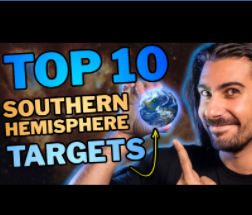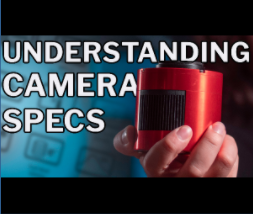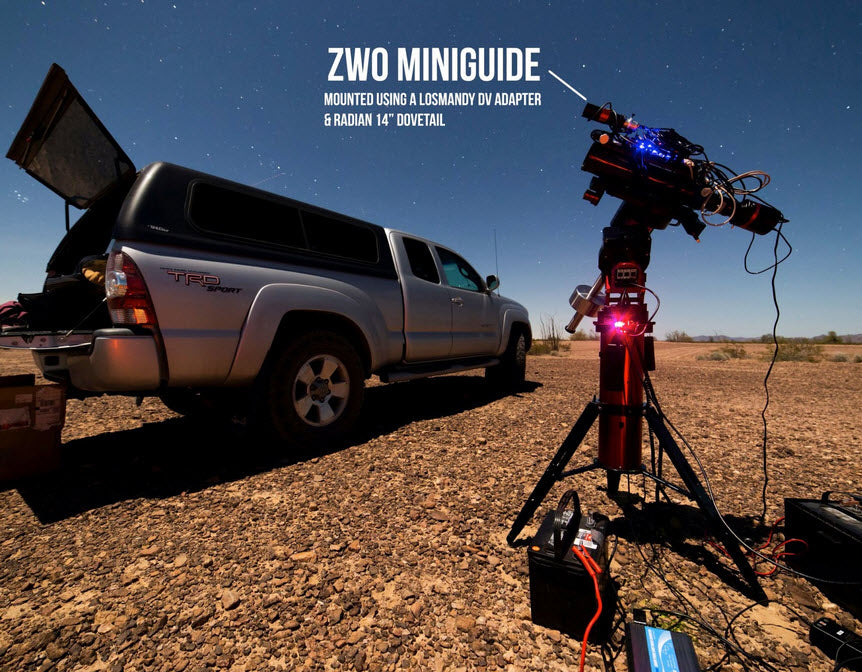Top 15 Winter Objects!!!
Winter is here, and we got the top 15 winter objects for you to image this season. Learn what constellation they are in, what type of object it is, and the best equipment to capture it! The measurements used in this blog are based on a standard micro four-thirds sensor like the ASI1600. These measurements will change depending on your sensor. Alright, let’s get started!
The Top 15 Winter Objects for Astrophotography
1. The Orion Nebula (M42)
We had to start things off with one of the most popular deep space objects that are also perfect for beginners, the Orion nebula, also known as M42.
- M42 is the most visible and famous DSO of the winter sky.
- M42 is an emission nebula, which is a nebula formed of ionized gases that emit light of various wavelengths.
- It’s most people’s first captured target.
How to Capture the Orion Nebula
- You can find the Orion Nebula in the Orion constellation with your naked eye in dark skies, even with lots of light pollution.
- For observers, this is a perfect object to observe with binoculars. For imagers, M42 is best shot with a telescope between 250-500mm, and it can be shot in either narrowband or broadband.
2. The Pleiades Cluster or M45
The Pleiades cluster, commonly known as the Seven Sisters or M45, is an open cluster of more than 1000 stars held together by their combined gravity. This is the closest deep space object on our list to Earth at only 444 light years.
How to Capture the Pleiades Cluster or M45
- This star cluster can be found in the Taurus constellation. Look for the great question mark or Subaru logo in the sky.
- M45 is bright enough to be seen with the naked eye and even in moderately polluted skies, making it another perfect object to observe with binoculars.
- If you want to capture M45, it is best shot with a telescope between 250-500 mm.
3. The Jellyfish Nebula
This jellyfish nebula is a supernova remnant, which means the leftovers of an exploded star.
How to Capture the Jellyfish Nebula
- You can find this nebula in the constellation of Gemini.
- It is best shot in narrowband using a 300-450 mm focal length.
4. The Crab Nebula!
The crab nebula is a type ii supernova.
How to capture the Crab Nebula
- The Crab Nebula is located in the Taurus constellation.
- This nebula is mostly shot in narrowband.
- It's a tough object to get due to it being so small and dim, but for any of those that are up for the challenge, this one is a good one. We recommend using a 2000mm to 4000mm focal length to get the most detail!
5. Monkey Head Nebula
The Monkey Head Nebula is an H II emission nebula.
- You can find this nebula in the constellation of Orion around 6400 light years from Earth.
- The Monkey Head is pretty big and pretty bright and also really colorful when post-processing after capturing in narrowband.
- A good focal length for this target is around 700-1000mm
6. The Great Andromeda Galaxy
Long exposure photographs reveal the Andromeda galaxy to be a whole universe of stars similar to our own Milky Way galaxy, which is why it is also known as our sister galaxy.
The Andromeda galaxy is so distant that only when a telescope and camera are combined, you can capture its true stunning nature. At 2.5 million light years away from Earth, from our perspective, this galaxy is huge! You might not see it with your naked eye, but it's about 6x bigger than our Moon! Some people under the darkest skies can see it with their naked eye.
How to Capture the Andromeda Galaxy
- To get the best captures of Andromeda, use between a 200 to 400 mm focal length. The Andromeda Galaxy is also most people’s first imaged galaxy.
7. The Orion Constellation
Home to many beautiful winter night sky objects like the Orion Nebula, the Horsehead and Flame Nebula, the Witches Head, the Running Man Nebula, Barnard's Loop, and many more!
How to Capture the Orion Constellation
- The Orion constellation is best shot with any widefield lens and a perfect object for your star tracker.
- With a very long exposure, you can pick up some of its many nebulae and hydrogen clouds. These become especially apparent with dedicated astro cameras or an astro modified DSLR.
8. The California Nebula (NGC 1499)
NGC 1499 can be found in the constellation Perseus, which is very close to us, at only 1000 light years away. The California Nebula is also an emission nebula, famously named because it's shaped like the state of California.
How to Capture the California Nebula
- The California Nebula can be shot in both broadband and narrowband, but narrowband is the best to really bring out the details.
- If you want to capture the entire nebula, use a focal length between 200 and 500mm.
9. The Beehive Cluster (M44)
The beehive cluster contains about 1,000 stars and is the third brightest object in the Messier catalog.
How to Capture the Beehive Cluster
- Find this busy open star cluster in the Cancer constellation.
- You can see M44 from a dark sky site, and it’s a great broadband target to capture using a 300mm - 500mm focal length.
10. The Horsehead Nebula (IC434) and Flame Nebula
You can find this captivating duo in the Orion constellation, right on the edge of Orion's belt. The Horsehead Nebula is a diffuse dark nebula, and the Flame Nebula is an emission nebula. Both are around 1500 light years from Earth, which is very close in relation to the rest of the universe.
How to Capture the Horsehead Nebula and Flame Nebula
- To capture them both, you can use a focal length between 350mm to 600mm.
- The Horsehead Nebula and the Flame Nebula can be imaged with both narrowband and broadband.
11. The Soul Nebula
Like the Horsehead Nebula and Flame nebula, you can capture the Soul Nebula with its companion, the Heart Nebula. At only 7500 light years from Earth, this bright and large emission nebula makes a great target for imaging.
How to Capture the Soul Nebula
- The Soul Nebula is best imaged with a 250 to 500mm focal length.
- It’s a perfect narrowband and broadband target, or 150-200mm if you want to capture the heart as well.
12. The Heart Nebula
Find the Heart and Soul Nebula in the constellation Cassiopeia The Heart Nebula is attached to the Fishhead Nebula and part of the Heart and Soul Complex. These two are hard to miss since they’re both very bright emission nebulae.
How to Capture the Heart Nebula
- The Heart Nebula is a great narrowband and broadband target.
- It is best captured using a 200-400mm focal length, or you can get up close to the heart of the Heart Nebula and capture the Mellot 15 using a 1000mm focal length
13. The Flaming Star Nebula
Find this emission nebula in the constellation of Auriga, 1,500 light years from Earth.
How to Capture the Flaming Star Nebula
- You can capture the Flaming Star Nebula with a 300m to 500mm focal length and is best shot in narrowband.
- This Nebula is very long, so shooting it with a square sensor might be tough. It also is very close to our next target and can be imaged together at 250-300mm.
14. The Tadpole Nebula
The Tadpole Nebula is an emission nebula 12,000 light years from Earth and can be found in the Auriga constellation right next to our last target, The flaming Star Nebula.
How to Capture the Tadpole Nebula
- This nebula is best captured with an 800 to 1000mm focal length.
- It also makes an amazing narrowband target, producing a lot of detail and wavelengths to process.
15. Triangulum Galaxy
Last but not least, is the Triangulum Galaxy. Find this spiral galaxy in the Triangulum constellation 2.7 MILLION light years from Earth. The Triangulum Galaxy, Andromeda, and the Milky Way are the three major galaxies that make up our local group!
How to Capture the Triangulum Galaxy
It is best imaged with a 500-1000mm focal length in broadband, but don’t forget to pick up some Ha data for its bright red nebulae.
And that wraps up our best 15 winter objects to observe or image! Which one is your favorite? ? Let us know in the comments below!
If you do not have a micro 4/3 sensor and would like to know what focal length would be best with your sensor, you can use apps like Stellarium or other astronomy tools.
If you capture any of these objects, make sure to tag us on Instagram using the hashtag opteam for a chance to be featured! Clear Skies!











